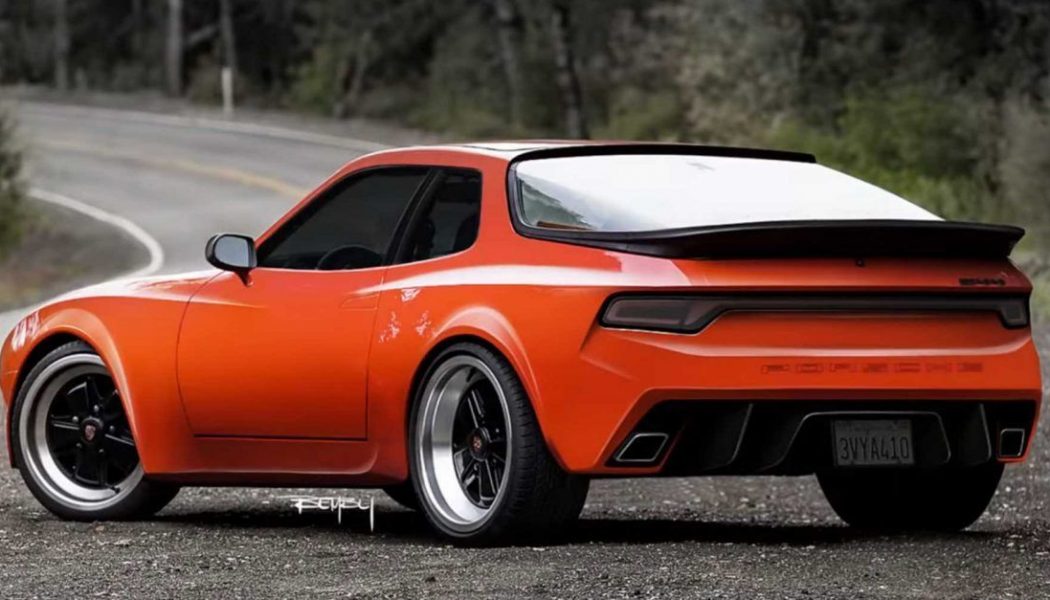What’s seldom discussed is that 10 years prior, the industry had gone through a similar, albeit more protracted die-off. The 1990s would be littered obituaries for automakers that simply couldn’t cut it during what turned out to be a transformative period for car companies facing shifting customer tastes and economic trends. While not as acute as a global financial collapse, the decade’s slower-motion impact nonetheless was vast.
During the ’90s the hodge-podge of companies that had accumulated after the gung-ho initiatives of the ’80s collided head-on with the realities of the era. Some of these brands were formulated from the ashes of past acquisitions, while others snuck onto the market in disguise to hoodwink a new set of customers. Then there were the flights of fancy from automakers flush from recent financial success, soaring alongside old school, badge-engineered dinosaurs limping their way towards an uncertain future.
Whatever the case, a reckoning was at hand for a half-dozen or so that simply couldn’t cut it once the decade had run its course. Who where they, and what brought them to their knees? Let’s read the epitaphs as we walk among the headstones of the car companies you didn’t know had disappeared during the 1990s.
Eagle
What Was It? Chrysler’s attempt to polish some of the assets it had acquired when purchasing AMC from Renault in 1987, combined with the fruits of its Diamond Star Motors captive import deal with Mitsubishi.
How Long Did It Last? 1988-1999
Why Did It Die? Eagle is the perfect example of what happens when a car company tries to set a fresh table using leftovers. Forced to take on a flagging line-up of American Motors cars when all it had really wanted from the AMC deal was Jeep, Chrysler would put a brave face on the situation by creating the Jeep/Eagle division, stocking the latter with a mix of remaindered Renault-AMC sedan designs too far along in the pipeline to cancel and brand new rebadged Mitsubishis built in partnership through the Diamond Star Motors subsidiary.
If this sounds like a recipe for an ultra-confusing showroom experience, you’re not wrong. Walking into a Jeep/Eagle dealer meant seeing SUVs on one side of the floor, Giugiaro-penned sedans like the Eagle Premier in the middle, and all-wheel-drive turbo hatchbacks like the Eagle Talon (née Mitsubishi Eclipse) on the other. Some models were all-wheel-drive, but eventually most weren’t, especially once Chrysler shifted to just slapping the bird logo on Dodges and leaving them to bewildered Eagle dealers to somehow sell.
By the mid-90s Chrysler began to thin the Eagle flock, eventually offering only the Vision sedan and the Talon. Few could tell what set the brand apart from other products in the Pentastar fold, and sales reflected its almost zero recognition among customers. The Talon would be the final Eagle to leave the nest as a 1998 model.
Geo
What Was It? General Motors’ unusual attempt to sell Japanese cars to customers who wouldn’t touch Chevys.
How Long Did It Last? 1989-1997
Why Did It Die? In the 1980s GM became convinced that the only way to stop imports from continuing to eat its lunch was to … also sell imports. Rather than focusing on its own vehicle quality, the corporate brain trust went through the effort of creating an entirely new brand—Geo—and then using it to rebadge vehicles built by Isuzu, Suzuki, and Toyota, with some cars, such as the Corolla-based Prizm, being manufactured by the California-based NUMMI factory.
The end goal might have been to attract buyers looking for Japanese quality at an affordable price, but tagging in so many different partners made for a similar smorgasbord-type lineup that afflicted Eagle.
Tiny fuel misers like the Metro hatchback joined the Tracker cute-ute, the Storm sports coupe, and the I-Can’t-Believe-It’s-Not-a-Toyota Prizm in presenting a broad spectrum of cars that didn’t really share much in common other than the Geo name, making it hard to develop much of an identity.
More importantly, Geo served as a solution to a problem whose time would quickly pass. Although conceived in the early ’80s, by the time the Storm and the Prizm made it to market Detroit had largely stepped up the casual nature of its manufacturing and design and was competitive in many segments against the likes of Honda and Toyota. GM’s interest in propping up Geo began flagging when Chevrolet and Pontiac were suddenly doing much better (to say nothing of the innovative, then-new Saturn brand) and sales dipped 30 percent below their peak by 1997. It was then that the plug was pulled and the remaining Geo models were awkwardly forced into the Bowtie’s product catalog where they would linger until 2004.
Eunos, M2, Xedos, Efini, Amati, and Autozam
What Were They? Mazda’s misguided attempt to build a luxury empire during the Japanese Bubble Economy.
How Long Did They Last? 1989-1997
Why Did They Die? Japan’s auto industry skyrocketed through the late 1980s on the back of the so-called Bubble Economy, which punched valuations on everything from corporate stocks to real estate through the roof. Wanting to get in on what it perceived as a never-ending party, Mazda made a major push to expand its operations both in its home country and Europe by creating no less than six premium sub-brands.
Autozam offered kei cars (like the famous AZ-1); Eunos handled fun-to-drive upscale models (such as the Cosmo and the Roadster, as the MX-5 Miata was known in other markets); M2 delivered a unique mix of tuner cars and vehicles built based on direct customer input; and Efini set yet another layer of lux on top of existing models like the RX-7, the 626, and even the MPV. Amati, which was intended as a true high-end badge to compete with Lexus and Acura on both the world stage and in Japan, also saw deep investment but never got off the ground.
Of course, the bubble popped, and when it did Mazda suffered more than any of its fellow Japanese automakers. One-by-one its extended distribution network folded back into the mothership while the company bled huge amounts of cash. Amati alone cost it billions of yen without yielding a single badged product, with only the eventual Mazda Millenia (intended as the Amati 500) serving as a silent testament to what might have been.
Daewoo
What Was It? Korea’s auto conglomerate that did a brisk business rebadging General Motors and Japanese cars alongside its own designs.
How Long Did It Last? 1937-1999
Almost as soon as it began, however, ailing financial trade winds in Asia would cripple Daewoo’s parent company, forcing it to sell its entire automotive operations to its once-partner GM. Daewoo would cease to exist as an independent brand in 1999, but its original trio of cars would continue forward, zombie-like, as “GM Daewoo” for a few more years before disappearing completely. In a bid to get a decent return on its investment, the General would transform Daewoo’s infrastructure into its own Korean operational center, from which it would spin off many Suzuki, Buick, and Chevrolet-badged subcompacts (a practice that continues to this day).
Plymouth
What Was It? Chrysler’s original value brand.
How Long Did It Last? 1928-2001
Why Did It Die? Of all the companies on this list, Plymouth is the name that resonates most strongly with American car fans. For 70 years Plymouth would churn out a mix of fun (the Roadrunner, GTX, ‘Cuda, and Superbird), weird (the Sapporo), and groundbreaking (the Voyager minivan) vehicles, weaving itself into the fabric of Detroit’s automotive mythos.
By the time the ’90s rolled around, however, Chrysler ran into a Plymouth problem. Diluted by the company’s bankruptcy of the previous decade, only a bare minimum of resources had been devoted to the Plymouth division, which meant the line-up was chock full of rebadged Dodge and Chrysler products. Uncertain as to how to shake things up and make buyers care about the brand once more, Plymouth would autopilot its way through the decade, with the Prowler sports car standing as its lone unique model. By this time, sales had shrunk to a mere 20 percent of their lofty 1970s peak.
Any plans to resurrect Plymouth were quickly put to bed when Chrysler merged with Daimler in 1998. Although the PT (Plymouth Truck) Cruiser was waiting in the wings as a volume model that could have saved the brand, the German head honchos balked at propping up a company with no clear place on the market. The PT Cruiser was instead sold as a Chrysler, and by 1999 Plymouth was dead in Canada. Two years later, it ceased to exist in the United States, too.










